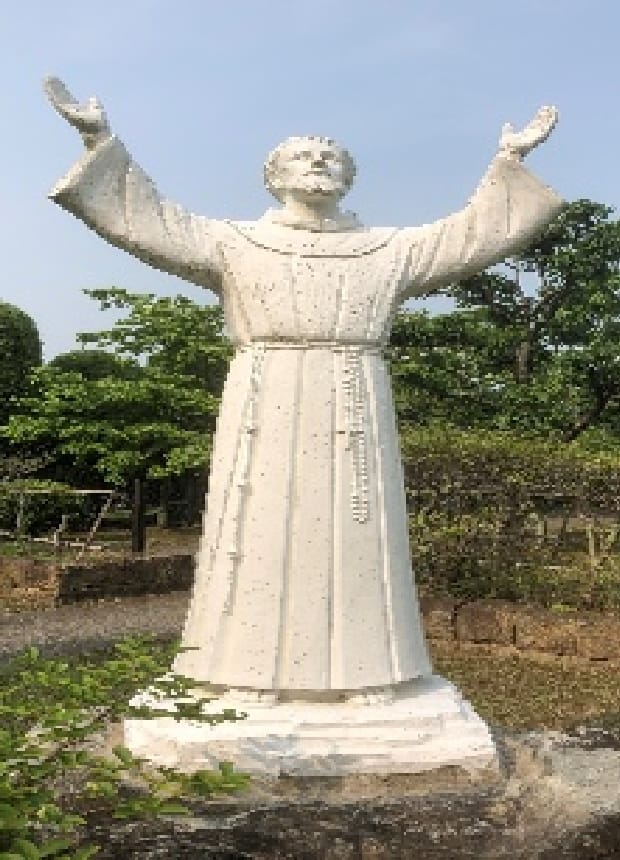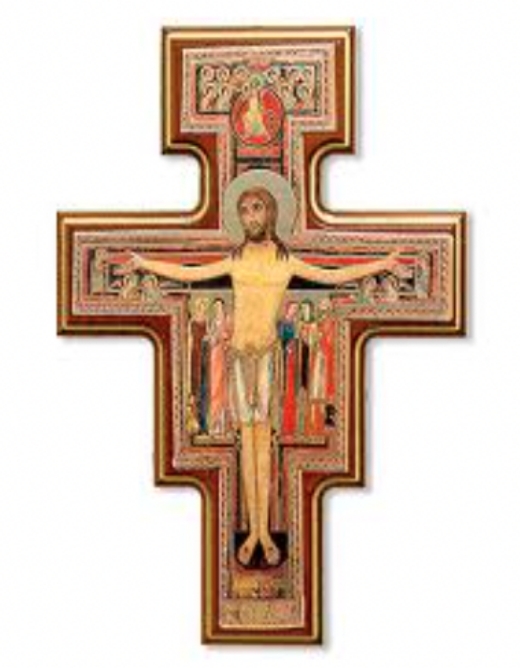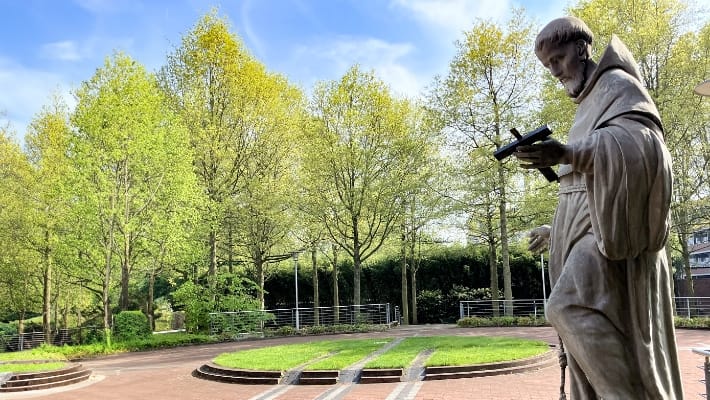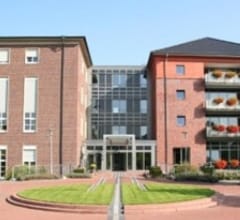St. Francis

Statue of St. Francis
next to the entrance of the Generalate
We would like to tell a little about St. Francis who caps the name of our Religious Congregation. Francis Bernardone was born in 1182 in a home of a prosperous merchant in Assisi.
Being educated in a gifted environment, he dreamed of becoming a knight. Having intelligence and possessions he led a pleasurable life as leader among his companions.
One day as he was outside of the city he came upon a man with Hansen’s disease. At first, as was his custom, he was about to avoid that poor man. However moved by a certain impulse, he alighted from the horse he was riding, and looking at the patient came close putting his arms around him and kissed him.
From then on Francis’ life changed. He had completely taken on different values.
Francis left his home, free from money, himself and his past. He was a captive of the message of Jesus Christ, and his complete life was a close following of Jesus Christ. Having taken seriously the Gospel, he kept it all his life.
He was called by God in 1226, but even now, in the Church, in the religious life, he continues to live in the hearts of many people.
During a contemplative walk in the summer of 1206, St. Francis passed by the crumbling San Damiano church near Assisi, Italy when he felt compelled to enter and pray. He knelt before the crucifix and was startled to hear a voice telling him to "go and rebuild my church which as you can see is falling into ruin." He began to gather stones to repair the church. However, he realized that there was a deeper meaning to those words, and it was then that he accepted God's invitation to live a life of poverty and service. The church that God wanted rebuilt was the inner spirit of each person.
The San Damiano crucifix
A 12th century Umbrian artist most likely created the Byzantine-style crucifix. St. John's Gospel story of Christ's death is painted on walnut wood using a variety of characters and symbols in icon form. The crucifix is approximately 74" tall, 47" wide and almost 5" thick. The significance comes from an event that became a turning point in St. Francis' life.
Some years later St. Clare of Assisi and her religious community-Women who followed the way of life of St. Francis, who later became known as the Poor St. Clara-were given the San Damiano church as their monastery. St. Clare prayed before the San Damiano crucifix for 41 years. When the Sisters moved to Assisi and into their new monastery, they brought the crucifix with them. This original San Damiano crucifix continues to be displayed in the Basilica of St. Clare, Assisi.

The Impact of Our Activities
In 1224, Francis is said to have received the Stigmata (the five wounds that Jesus received when he was crucified). His life was poor and full of love as a servant of Jesus and he continues to have a great influence on people all over the world to this day.
St. Francis lived with God, loved people, and loved nature. In his life, he embraced everything in the universe, the earth, the mountains, the oceans, the rain, and the wind, making them his friends and the objects of his prayers and praise.
He was called by God in 1226, but today he still lives on in the Church and in the hearts and congregations of his people.The ay of life of St. Francis of Assisi is more appropriate for today's world than at any other time.
We will live our lives by adopting an ecologically appropriate way of life that imitates the way of life of St. Francis. One of these ways of life was in the local environment. Pope John Paul II announced the world before his death that St. Francis was a saint of conservation (ecological). In 1980, John Paul II designated Francis as a Saint of Conservation (Ecological).
In particular, his “Prayer for Peace,” which is said to represent his very way of life, continues to inspire many people.
Prayer for Peace
Lord, make me an instrument of your peace,
Where there is hatred, let me sow love;
where there is injury, pardon;
where there is doubt, faith;
where there is despair, hope;
where there is darkness, light;
where there is sadness, joy;
O Divine Master, grant that I may not so much seek to be consoled as to console;
to be understood as to understand;
to be loved as to love.
For it is in giving that we receive;
it is in pardoning that we are pardoned;
and it is in dying that we are born to eternal life.







